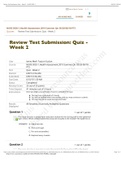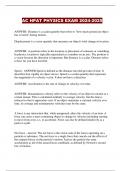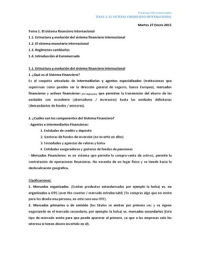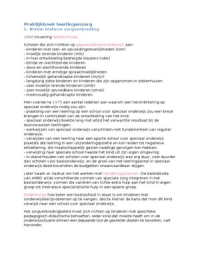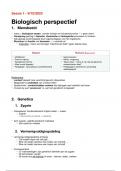Summary
Summary Psychology 324 exam notes
- Course
- Psychology 324
- Institution
- Stellenbosch University (SUN)
My notes are very detailed and contain all the necessary information for you to do well in this module. I received an A in both the predicate test and the exam and i only studied these notes. I have included graphs and tables to make the concepts, definitions and examples more understandable.
[Show more]




